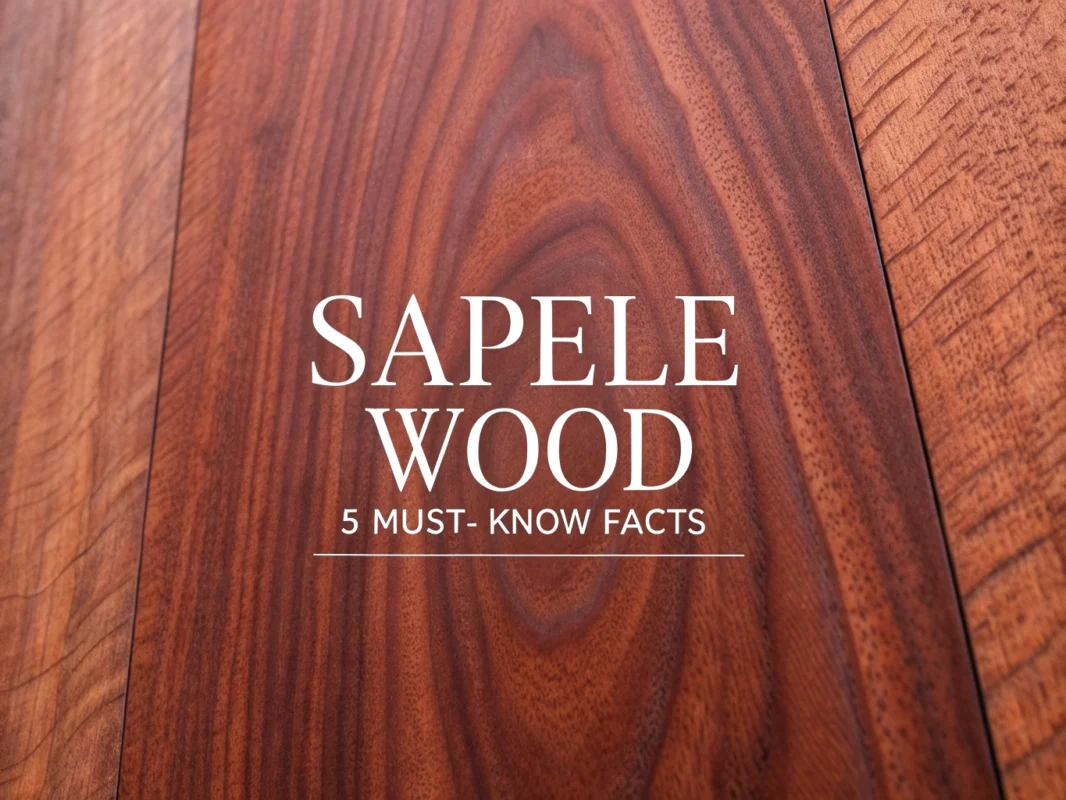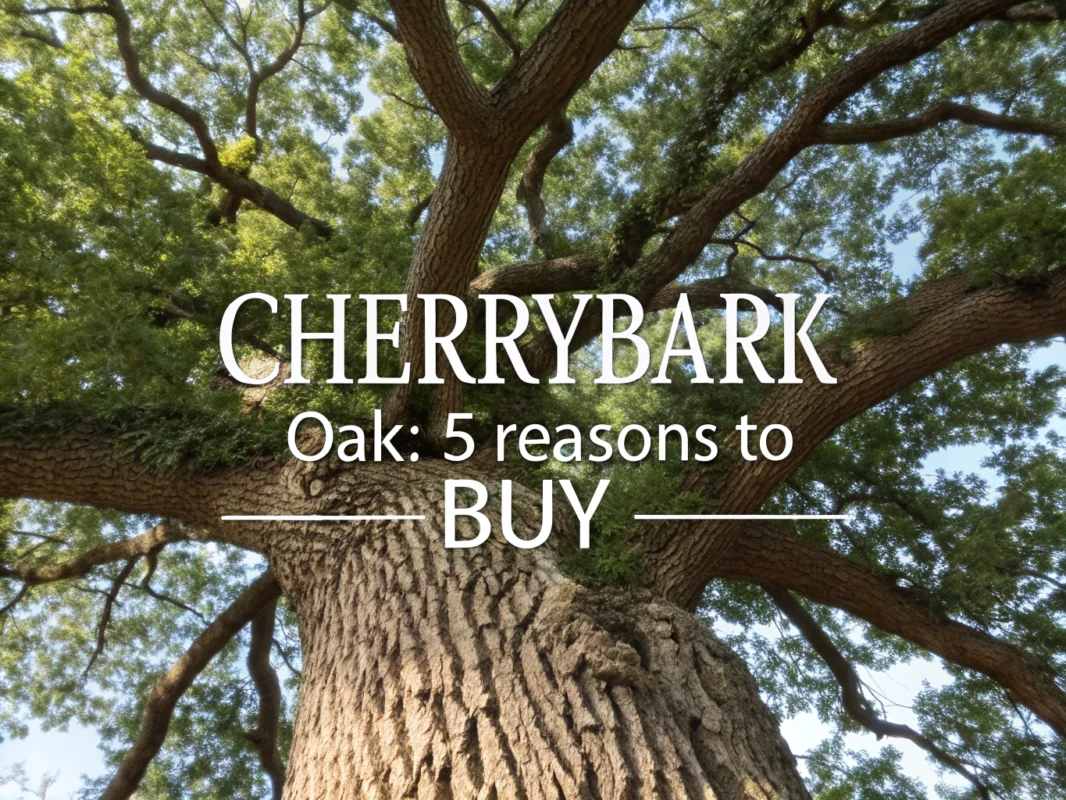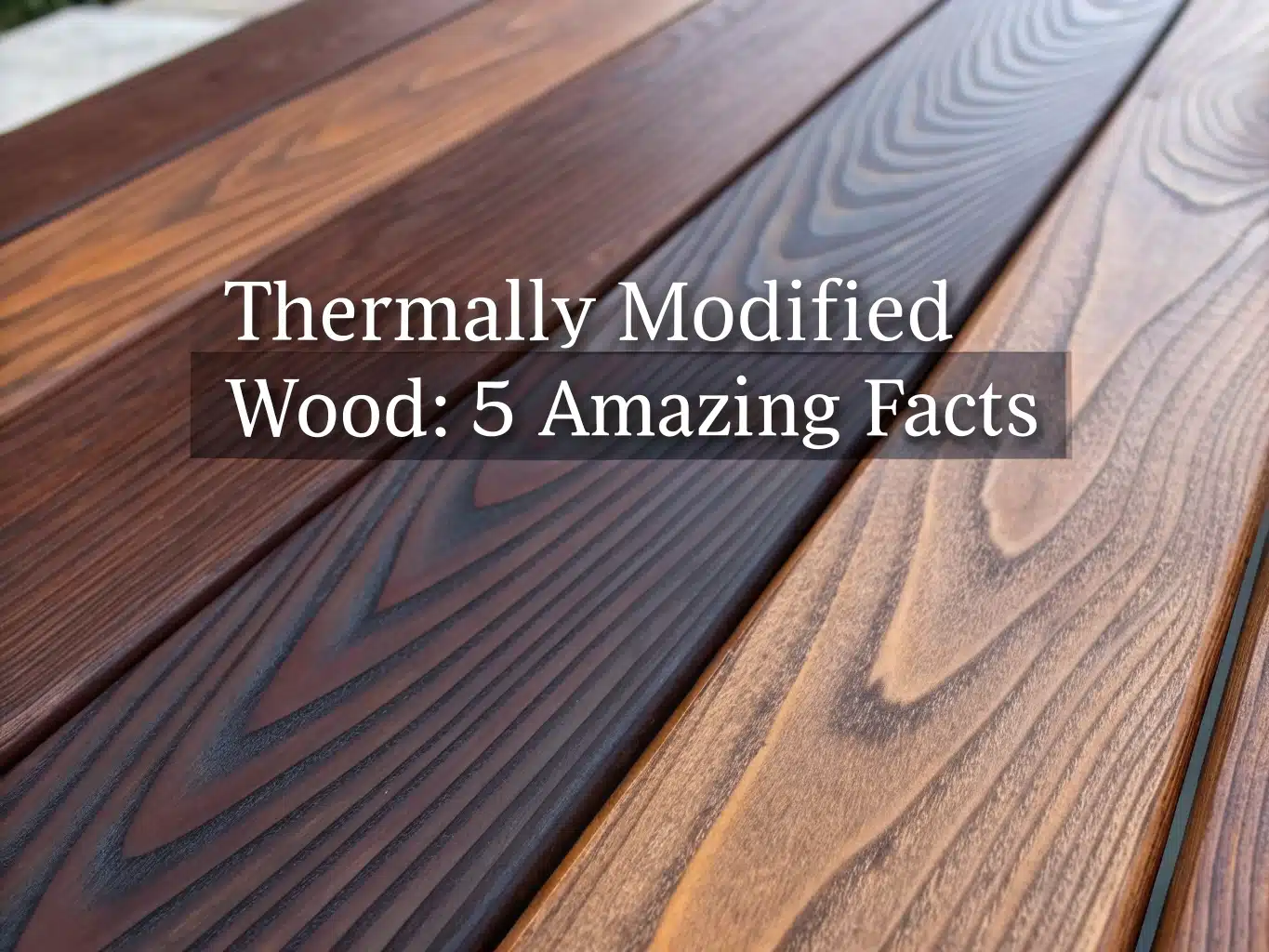
Thermally Modified Wood: 5 Amazing Facts

Ever wondered why thermally modified wood is gaining popularity in sustainable building projects? This fascinating material undergoes a special process that enhances its natural qualities, making it a top choice for both indoor and outdoor applications. Let’s uncover what makes thermally modified wood an innovative and eco-friendly option.
Table of Contents
Thermally modified wood represents a revolutionary approach to wood treatment that uses controlled high-heat processes above 180°C in oxygen-free environments to permanently alter wood’s cellular structure. This chemical-free transformation creates lumber with exceptional dimensional stability, decay resistance, and aesthetic appeal that rivals exotic hardwoods.
What Is Thermally Modified Wood?
Thermally modified wood is real, solid wood that’s been altered through a controlled, high-heat process in specialized kilns. The thermal modification process typically operates above 180°C (around 356°F) in an oxygen-free environment, which fundamentally changes the wood’s cell wall chemistry.
This technique makes wood significantly less absorbent and more dimensionally stable than untreated lumber. The process goes by several names including thermowood and heat-treated wood, but all refer to the same basic principle of using heat to improve wood’s natural properties.
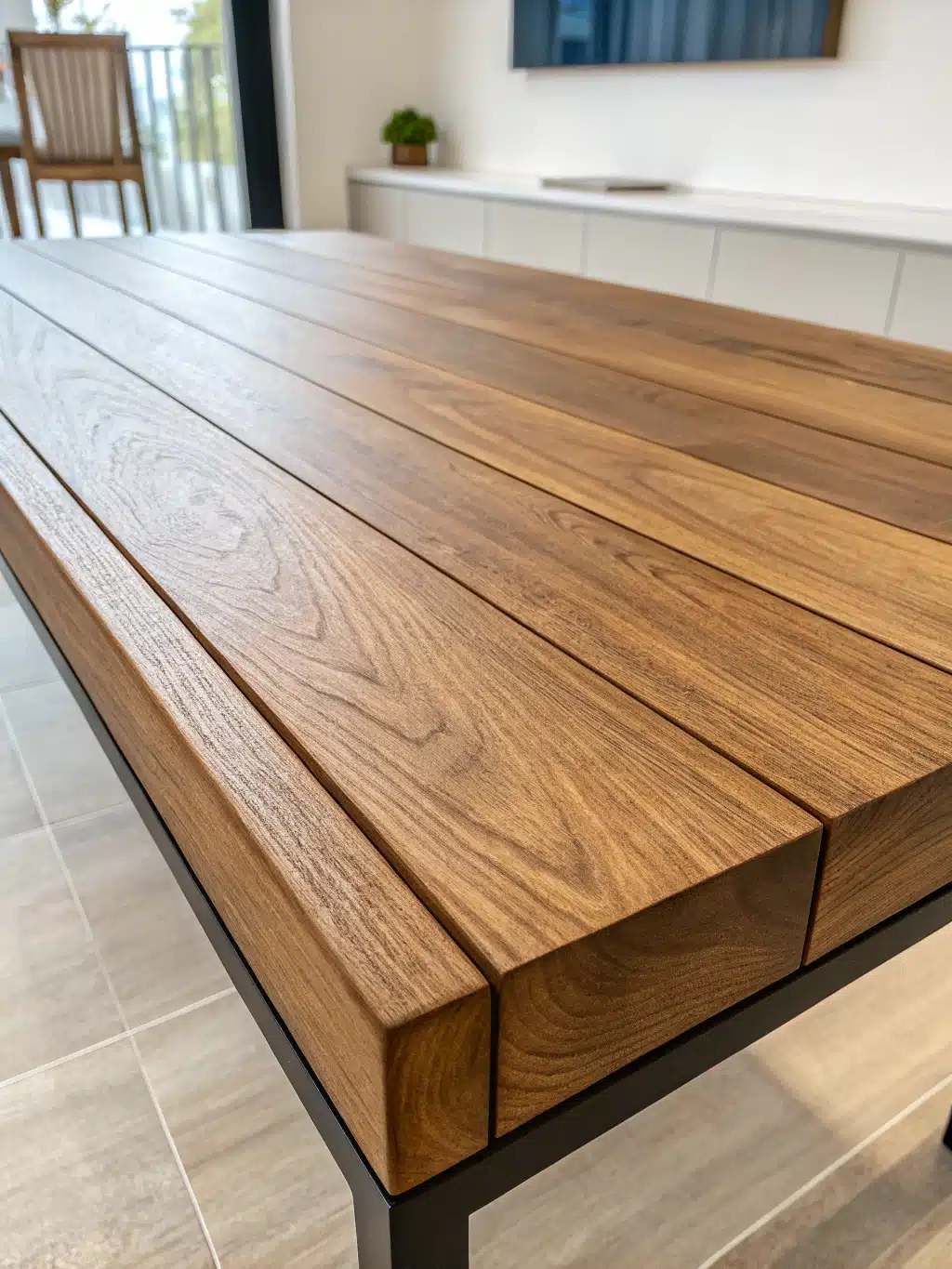
Fact #1: Remarkable Dimensional Stability and Reduced Water Absorption
One of the most impressive benefits of thermally modified wood is its up to 60% reduction in equilibrium moisture content compared to standard lumber. This dramatic decrease in water absorption virtually eliminates common problems like warping, swelling, and shrinking that plague traditional wood products.
The enhanced dimensional stability makes this material ideal for both indoor and outdoor applications. Popular uses include siding, decking, sauna interiors, and wall cladding where consistent performance is critical. Unlike regular wood that expands and contracts with seasonal moisture changes, thermally modified lumber maintains its shape and size year-round.
Fact #2: Outstanding Durability and Resistance to Decay
The heat treatment process removes natural sugars and acids from the wood that typically serve as food sources for mold, insects, and decay-causing organisms. According to Arbor Wood Co, this creates enhanced decay resistance without requiring any chemical preservatives.
This natural resistance translates to a significantly longer service life in exterior and wet environments. Thermally modified wood can last many years outdoors while maintaining its structural integrity and appearance, making it an excellent investment for long-term projects.
Fact #3: Environmentally Friendly and Chemical-Free Process
The thermal modification process uses only heat and steam – no chemicals whatsoever. This makes both the manufacturing process and the final product highly eco-friendly and safe for human contact. Resawn Timber Co emphasizes that this wood is completely safe for disposal or recycling at the end of its life cycle, with no toxic residues.
This chemical-free approach makes thermally modified wood an excellent sustainable alternative to chemically treated lumber or expensive exotic tropical hardwoods. Builders and homeowners can achieve similar performance and aesthetics while supporting environmentally responsible practices.
The Thermal Modification Process
The transformation happens through a carefully controlled multi-phase process in specialized kilns. Here’s how it works:
- Phase 1: Gradual heat increase to reduce moisture content significantly
- Phase 2: Rapid temperature increase up to 215°C, permanently altering cellular structure
- Phase 3: Steam cooling to bring moisture levels back to suitable ranges
Different countries have developed their own technologies: Finland uses Thermowood, France employs the Retification process, and the Netherlands utilizes the Plato method. Each achieves similar results through slight variations in temperature and timing.
Fact #4: Enhanced Aesthetics and Exotic Appearance
The high-heat process gives thermally modified wood a rich, darkened tone throughout the entire piece, not just on the surface. This deep coloring resembles expensive exotic hardwoods but at a fraction of the cost. The color penetrates completely, so it remains even with wear, sanding, or refinishing.
This makes thermally modified wood particularly popular for visually prominent applications such as accent walls, furniture, and architectural features. The consistent, attractive appearance adds value to any project while providing all the performance benefits of the thermal treatment.
Popular Thermally Modified Wood Products
These thermally modified wood products offer excellent options for various home improvement projects:

Rustic Barn Wood Wall Planks
- Thermally modified for durability
- Perfect for DIY wall projects
- Easy nail-in installation
- Offers 10 square feet of coverage
- Vintage holey design adds charm
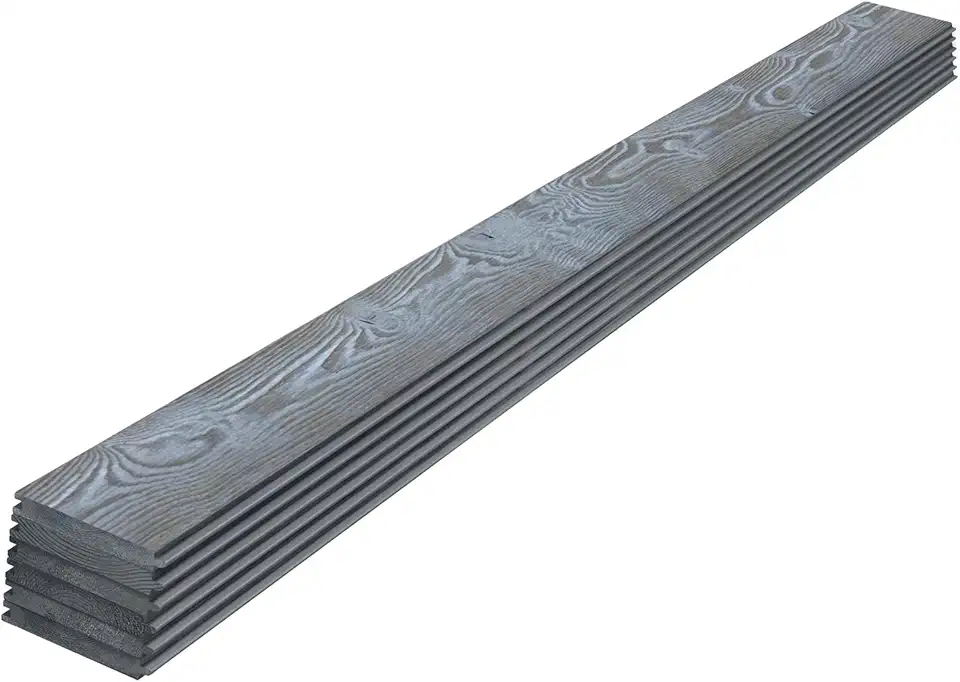
Blue Tongue & Groove Accent Boards
- Striking blue Big Sky finish
- Seamless tongue and groove installation
- Thermally modified wood enhances stability
- Ideal for accent walls
- Comes in a convenient 6-pack
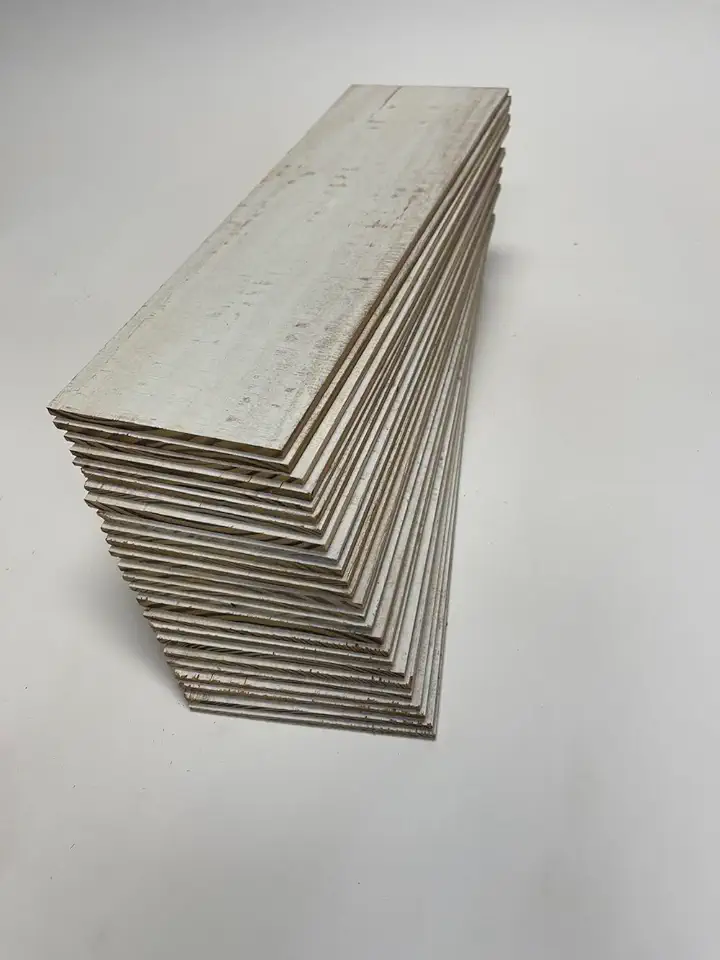
White Barn Wood Wall Shingles
- Clean white finish for a fresh look
- Quick and simple nail-in application
- Provides a generous 10 square feet of coverage
- Durable thermally-modified wood
- Bulk pack of 24 pieces for larger areas
Fact #5: Broad Range of Applications and Global Use
Thermally modified wood has gained global adoption among architects and designers for both residential and commercial projects. Common construction applications include exterior siding, decking, wall cladding, and specialty uses like saunas and outdoor furniture where durability and stability are paramount.
Interior applications have expanded rapidly as designers discover its aesthetic potential. Accent walls, furniture, and architectural ceilings benefit from both the visual appeal and dimensional stability. The material’s versatility makes it suitable for projects ranging from rustic cabins to modern commercial buildings.
For more wood options and project inspiration, check out our comprehensive wood blog or learn about other innovative materials like Accoya wood.
Specialty Thermally Modified Wood Options
These specialty products showcase the versatility and beauty of thermally modified wood:

Walnut Sliding Barn Door Kit
- Luxurious walnut stain for elegance
- Pre-assembled for convenience
- Thermally modified solid wood for longevity
- Sliding hardware included for easy installation
- Perfect size for most interiors

Hexagon Mosaic Wall Panels
- Unique hexagonal design for modern appeal
- Suitable for indoor and outdoor use
- Made from thermally modified wood for robustness
- Easy setup with 10 tiles in each box
- Natural wood finish adds warmth

Gold Wall Planks
- Rich gold color enhances any space
- Easy to install for DIY projects
- Thermally-treated for added strength
- Covers up to 10 square feet
- Includes 14 planks for flexible design
Important Limitations and Considerations
While thermally modified wood offers many advantages, it does have some limitations to consider. The thermal modification process can reduce mechanical properties such as overall strength and toughness compared to untreated wood. Thermory notes that this makes it less suitable for intense structural applications.
The material works best in applications where durability and dimensional stability are more important than maximum structural strength. Avoid using it for main load-bearing elements like structural beams, but it excels for siding, decking, and decorative applications where its unique properties shine.
Understanding these limitations helps you make informed decisions about when and where to use thermally modified wood. When properly applied, it delivers exceptional performance and longevity that justifies its slightly higher initial cost through reduced maintenance and replacement needs.
FAQs
What Are The Benefits Of Using Thermally Modified Wood?
Thermally modified wood offers several benefits, including increased durability, improved stability, and resistance to decay and insects. These enhancements make it an excellent choice for both interior and exterior applications.
How Long Does Thermally Modified Wood Last?
Thermally modified wood can last for several decades if properly maintained. Its enhanced resistance to environmental factors and pests extends its lifespan compared to untreated wood.
Is Thermally Modified Wood Environmentally Friendly?
Yes, thermally modified wood is environmentally friendly. The modification process uses heat and steam without harmful chemicals, making it a sustainable choice for eco-conscious consumers.
Can Thermally Modified Wood Be Used Outdoors?
Yes, thermally modified wood is well-suited for outdoor use due to its improved resistance to moisture, rot, and pests. It is commonly used for decking, siding, and outdoor furniture.
Does Thermally Modified Wood Require Special Maintenance?
Thermally modified wood requires minimal maintenance compared to untreated wood. However, regular cleaning and sealing can help maintain its appearance and extend its lifespan further.


